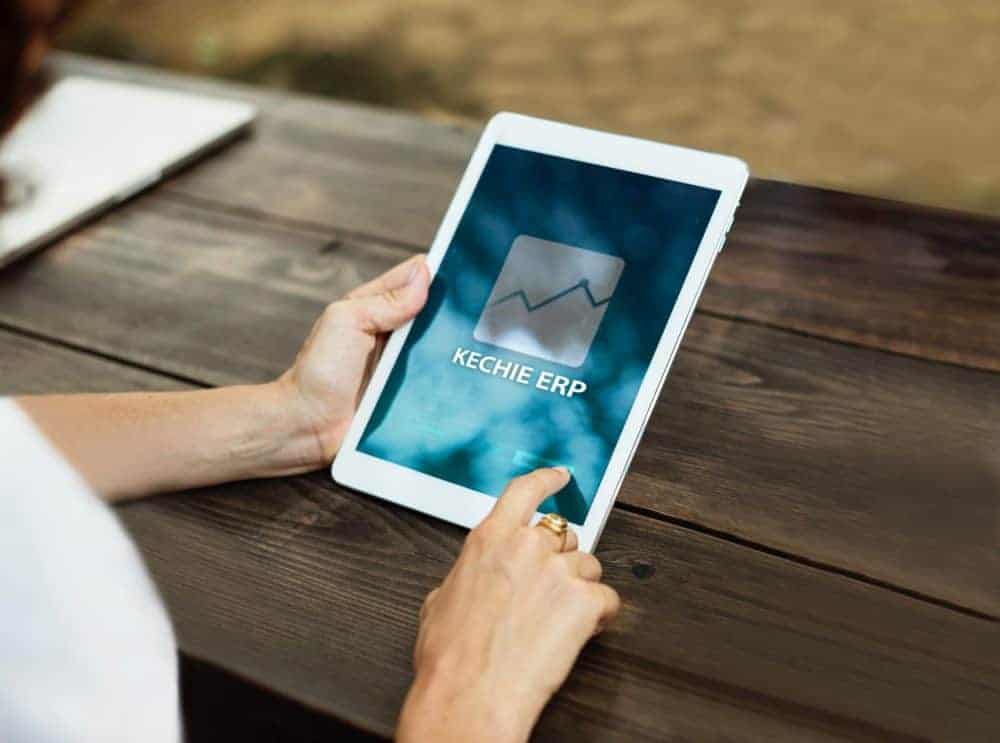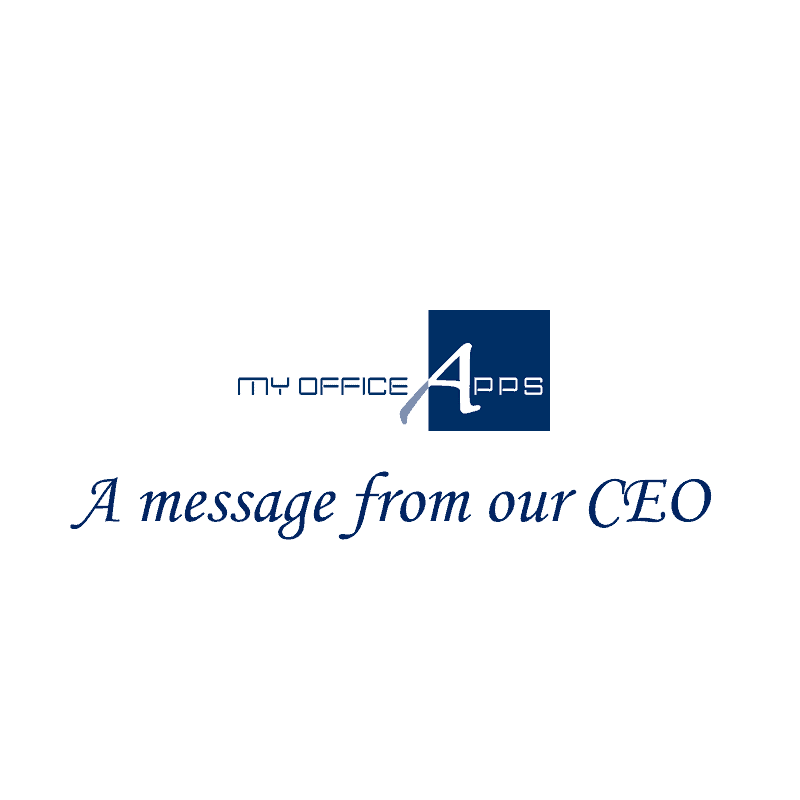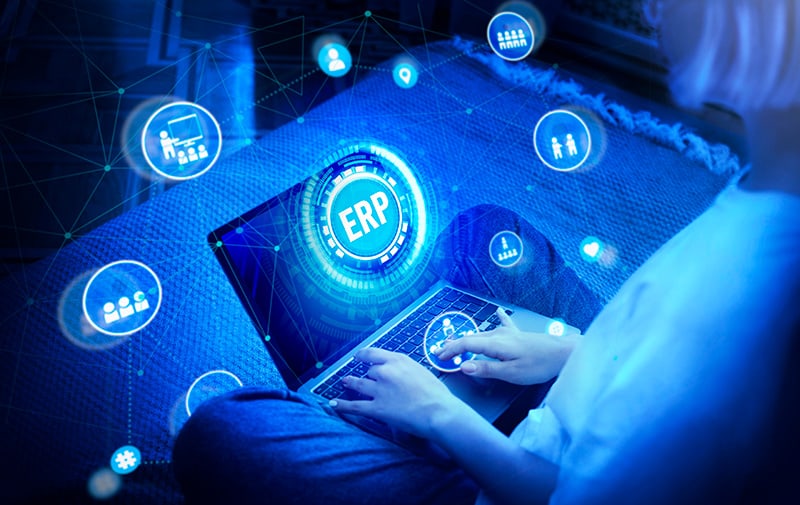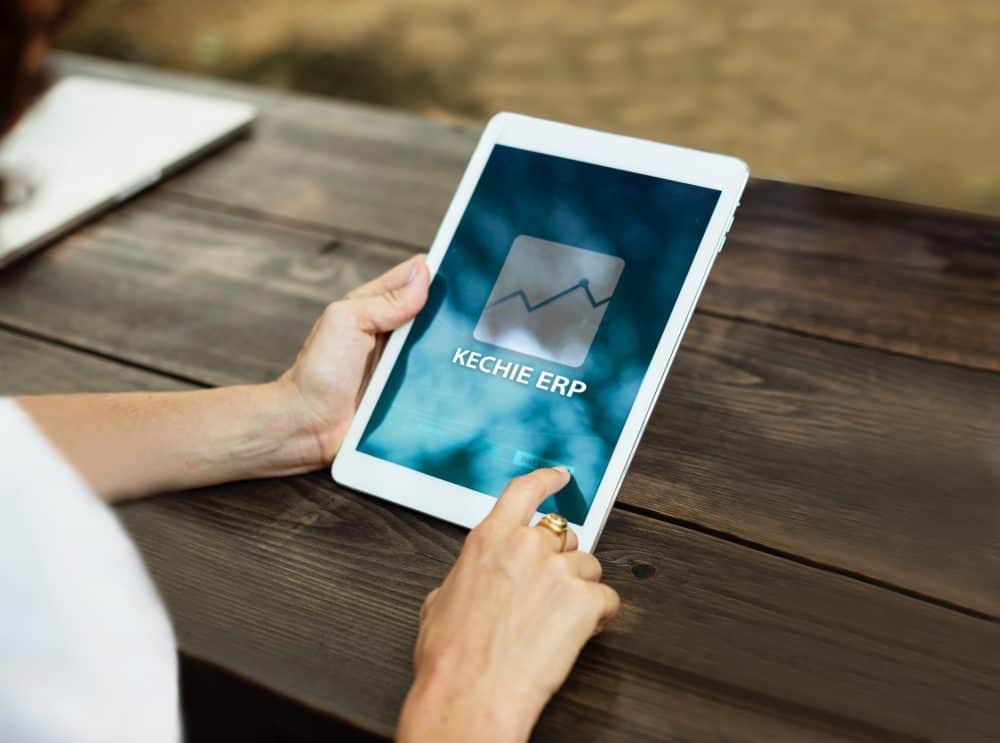Comfort, Peace of Mind, and Transformation for Your Business and Family
Comfort, Peace of Mind, and Transformation for Your Business and Family
Comfort, peace of mind, and transformation for your business and family is my wish for you as I reflect on a year unlike any other in our three decades of software design and development that led to the creation of our transformative business software. I want to first pause and express our heartfelt gratitude to our customers, partners, and all of you who took the time to consider our cloud-based Kechie ERP solution.
I also want to acknowledge the sting we all feel with the inability to gather with family and friends the way we enjoy, especially during the holidays. We have, and I’m sure most of you have suffered losses, whether family members, employees, customers, or business. Please know that you have the support of the entire My Office Apps team in any way we can help you and your business, and you have our deepest sympathy and prayers for healing.
Like many companies, we didn’t hit all the targets I imagined a year ago, but we have had important successes that have sustained us amid the shutdowns and remote work. Because we are a cloud-based solution, all our customers and we could immediately implement remote access to all critical inventory, purchase order, CRM, sales, WMS, logistics, procurement, manufacturing, and financial information. While we never imagined a global pandemic being the driver for the cloud-based digital transformation of manufacturers and distributors, we feel especially grateful for our design decisions when customers tell us Kechie has been a “godsend” in the current remote work environment.
We are in awe of all our customers and the companies that have worked with us over the past year. Thank you for all you’ve contributed to the collective spirit of innovation and perseverance that helps us weather the current conditions.
As we move into 2021, that spirit motivates our mission even more to serve and support businesses like yours. We will continue developing and implementing Kechie ERP to empower and propel your businesses to new heights by maximizing efficiency, strengthening company-wide collaboration, and empowering you to make timely, accurate business decisions. You can count on the team at My Office Apps to deliver a solution tuned to your business and how you need to operate during these challenging times.
And finally, thank you for being a part of our family. It’s my sincere hope that you can spend meaningful time with your loved ones in any way you can and that you get some much-needed relaxation.
Sending you warm wishes this holiday season, and may the new year bring you peace, prosperity, and good health.
Best Wishes,
Mariam Komeili, CEO
How to Get the Best ROI from Your ERP Investment
How to Get the Best ROI from Your ERP Investment
There is no doubt that installing a new ERP software can be a big step. Whenever a business invests, the first thing to consider is the ROI (Return on Investment) to ensure the benefits are worth the capital and resources being invested.
Below are some of the factors that should be considered when analyzing the ROI of such an investment.
Initial Installation Costs
The initial installation costs can vary considerably depending upon the deployment of cloud-based software vs. on-premise software. For an on-premise, a software license fee can be a considerable amount, not to mention the costs involved in configuring or customizing the software to fit your business. Some ERP vendors may recommend that you hire expensive consultants to help you with this process. The installation will likely require some amount of effort from your own staff to review your business needs and provide the requirements for how the ERP system should be configured to match your business.
Besides software and consulting costs, installing on-premise software will likely require that you purchase hardware to host the system. The computers themselves can be quite expensive and may even require some refurbishments to your facility to make space for the computers and handle the additional electrical power required. Cloud installations that provide the ERP software as a service through the cloud do not have any of these expenses and represent significant savings.
Finally, when you have decided on the type of deployment and configured the software, you need to migrate your existing data to the new software. These include customer & vendor lists, bills-of-materials, purchase orders, accounts receivable, inventories, etc. It is crucial to migrate your data correctly and quickly so that no transactions are lost, and any company downtime is minimal.
On-Going Operational Costs
The on-going operational costs can also vary significantly depending upon the type of deployment. For an on-premise installation, there are other costs to consider, such as electricity, a proportion of the rent for space the hardware is using, and an on-going IT staff to maintain the system, including data backups and applying software updates. The vendor may also require on-going payments for software updates and support to answer any questions that your staff may have.
Typically, the costs for a cloud installation are much simpler. You will likely need to pay a monthly subscription fee for access to the software. Most vendors offer backups and software updates included in the monthly subscription. Plus, there are no additional expenses for electricity, rent, or IT staff to maintain the hardware.
Benefits of Increased Efficiency
A key reason for installing a new ERP system is to achieve increased efficiency in your company and reduce your business operations cost. By automating processes that used to be performed manually, your staff can be more efficient, and their time can be allocated to helping the company grow. Also, inventory management processes can be improved to increase your inventory turnover and reduce waste. When it comes to manufacturing, scheduling will be done more efficiently, allowing you to reduce overtime and other operational expenditures.
Benefits of Improved Sales
A benefit of choosing the right ERP system that is often overlooked is that it will allow you to provide better customer service and increase your sales. By having the needed information at their fingertips, your sales staff can provide quotes for prices and inform customers of available inventory and lead times faster than current manual methods. They may also increase each customer order's size by suggesting additional products that can be purchased along with the main product (cross-selling and/or upselling).
Benefits of Increased Flexibility in Your Operations
A good ERP system will allow you to access information in real-time from anywhere, as long as you have a good internet connection. This allows a warehouse manager to query inventory status on a tablet computer while walking through the warehouse. You can have employees work from home and be as effective (if not more) than working in the office. Employees can travel and visit customers face-to-face without worrying about missing out on updates back at the office. The company’s operations can be handled anywhere from the cloud.
Better Overall Management and More Confidence in Your Operations
Although this benefit may be hard to quantify, it can be very significant. Having the information in real-time on what is happening in your business will give you greater confidence and help you decide on your business's direction. Perhaps you have been thinking about adding a new product line or expanding a current sales strategy. With a more capable management system, you will have greater visibility and streamline the needed steps to bring it on board and monitor the ROI. Furthermore, you will have the information needed on costs, equipment utilization, vendor performance, etc., that will allow you to increase your bottom line and grow your business.
Summary
There are many things to consider when considering a potential investment in an ERP system and figuring out if you will get a good return on your investment. My Office Apps has business specialists available to help you evaluate your business and find ways to minimize the costs and maximize the benefits with our Kechie ERP system. Folks on our team have been using ERP systems for many years under all sorts of different situations. We have been in your shoes, and we can leverage our experience to show how much of a positive impact a reliable ERP system can make for your business.
For more information and advice on how to upgrade your management software without it being a major pain, visit www.myofficeapps.com. Or schedule a demo to see how we can help solve the business issues you face, both today and tomorrow.
When is the Best Time to Bring on a New ERP System?
When is the Best Time to Bring on a New ERP System?
A key to successfully manage a company is to learn how to manage change. A good manager is proactive and anticipates changes in the company’s external environment to better prepare ahead of time. A manager who is unable to anticipate change is reactive, causing unnecessary errors and adjustments. In some cases, they are forced to make sudden changes, leading to an overreactive response that can be detrimental to the company’s health.
Bringing on a new ERP system will create change in your company. However, if done thoughtfully and strategically, it is a great boon to your company. It will allow you to be more efficient, effective, and even boost your financial results. This article will discuss various scenarios when it makes sense to bring on a new ERP system and how to recognize those scenarios.
When You Are Considering Other Changes to Your Business
Companies are ever-changing and seeking new ways to build and grow their business. A company may open a new manufacturing site, relocate to a larger facility, introduce a new product line, or acquire another company. A company may want to revamp its internal processes to ensure continuity and streamline.
If you are going through one or more of these changes, upgrading your ERP capabilities is a natural part of this change process. It is often more efficient to do these changes together. One of the opportunities during an ERP upgrade is that it will allow you to rethink your business processes and help make improvements. Oftentimes, a company may repeat the same inefficient processes and find manual workarounds. They discover their current software cannot support or change with advanced technologies. One prime example is a barcode system's technological capabilities, which your current software cannot support or is too expensive to build out. If you upgrade to a software system that can handle this feature, you will improve productivity not only for your administrative activities but also for your physical activities.
Perhaps you are planning a major expansion and anticipate you will be required to onboard a large staff of employees to handle the increased business. Do you really want to bring on the new employees, train them in an existing ERP system and then find out that the old system cannot handle the increased business? You may have to install a new ERP system to handle the increased business and then train them again just a short time later in the new system. Consider adding a new ERP system that is efficient and can automate certain aspects of your business processes to justify low headcount costs.
For Cyclical Businesses, Transition to a New System During One of Your Slow Periods
Many businesses are cyclical, with both busy and slow periods. If your old system had difficulty keeping up during your last busy period, taking advantage of the slow period to onboard a new effective ERP system is a great strategy.
When Your Administrative Costs are Higher than Your Operational Costs
A well-run business should have more people and resources devoted to operating your company than keeping track of it. These people consist of sales, production, and warehouse staff. The business will require other administrative people who execute indirect tasks such as keeping track of inventory, accounting, purchasing production planning, etc.
Inefficient ERP systems can cause more harm than good. You may find yourself in a position to hire more people to keep up with manual methods and workarounds due to the lack of ERP capabilities. These costs include the additional salaries and benefits and the costs of errors made by manual data entry, missed shipments, or having the wrong levels of inventory. A modern ERP system can help you keep these administrative costs under control. It will allow you to do more with higher accuracy and fewer headcount.
The team at My Office Apps has great experience making changes in a business and using more advanced software to improve business operations. We have been doing this for many decades, both for our own business and our Kechie software clients. Contact us, and we can discuss the challenges you face in your business and how we can help you develop a plan to make improvements using advanced software tools. To learn more, you can visit us at www.myofficeapps.com. Or better yet, give us a call at (714) 486-1487 and ask to schedule a demo to show how we can help solve the business issues you face, both today and tomorrow.
Implementing New ERP Software Is Not As Hard As You Think
Implementing New ERP Software is Not as Hard or as Costly as You Think
You know you need to upgrade your business management software, but the challenge of changing to a new system and moving your data over is holding you back. A reliable Enterprise Resource Management (ERP) software system is essential to cost-effectively running your business, keeping up with the competition, and interacting with internet-based customers and partners. Every month you delay you are falling further behind.
So why do companies delay?
Data migration and staff reluctance to change. And of course, the unspoken fear of whether it will really work better than what I’m doing now. Although these are manageable challenges, most ERP software providers leave these challenges to their customers.
If you’d like to upgrade your business management system to the best capabilities available but have hesitated due to the time and effort to make a change, we have news for you. It really is not as difficult as you think! Our Kechie ERP software is designed for small and medium-sized businesses in your situation and has built-in features that make this transition easy. Other suppliers of inventory management and ERP software focus on getting you to install the software as fast as you can with a minimal cost trial offer but leave you with the implementation cost undefined. After 30 days you are on your own paying a consultant $200/hr or more to move you to a point where you can utilize the software and your old data. The team at My Office Apps is committed to your success and will work with you every step of the way. Because our team has great experience working in a multitude of different manufacturing, distribution, and service companies, we have been in your shoes.
Our philosophy is not just that we are providing software, but we are here to help our clients improve their business through automation and enabling more efficient procedures. We can advise you on how best to make this transition and offer suggestions on how you can improve your internal operations to take maximum advantage of our software features. With Kechie, our customers can typically make the transition in weeks and not months.
When you invest in Kechie, our team takes over from the beginning and is with you through the entire implementation and ongoing operation of your ERP system. You are never on your own to figure out what to do next or how to solve a problem.
The key to a quick start and short implementation is that we create an implementation Blueprint unique to My Office Apps and Kechie. We understand your business, data, and training needs and create with you a roadmap to success. From this, we can estimate the implementation services and time it will take to migrate your data and train your team. You know upfront how much it will cost to successfully implement your ERP software and we build the support services into your monthly software fee. Simple. Honest. Straightforward.
What are some of the details?
- Transferring this data manually could be very time-consuming, but Kechie has a great Data Import feature that will automate most of the work. These software routines will save considerable time. While doing this, some customers may use this as an opportunity to clean up their data and eliminate obsolete products or customer information, but this is not mandatory.
- Kechie has been carefully designed to provide an intuitive menu system that can be learned very easily. In addition, once someone has been trained to use one Kechie module, they will find that the menu arrangements for other Kechie modules are quite similar, and learning how to use these is even quicker.
For the initial transition, most of our customers will just concentrate on starting to run Kechie with the same functionality that they experienced with their previous system. This is a good strategy because it allows your team to focus on the initial transition and doesn’t introduce too many changes. However, we emphasize that this is just a way to get started.
The real value of Kechie is that it will enable you to gradually activate some of the additional functionality available in Kechie and improve both the efficiency of your operations as well as your visibility into how well things are going.
For example, perhaps your old system did not support functionality related to manufacturing or purchasing.
Once you are comfortable that the other Kechie modules are running smoothly you can then proceed to start automating these additional functions to achieve the true benefit of the system. And since the software has been designed to be highly integrated, once you do activate these additional modules, relevant data from them will start appearing automatically in the modules you were previously using. For example, when a manufacturing job is completed, the inventory module is automatically updated to show the additional inventory. Your team won’t have to manually enter in this data from an Excel spreadsheet or other ad hoc method you were previously using.
Conclusion
For more information and advice on how to upgrade your enterprise resource management software without it being a major pain, visit www.myofficeapps.com. Or better yet, call us at (714) 486-1487 and ask to schedule a demo so we can show how we can help solve the business issues you face, both today and tomorrow.
Three Ways to Tell if Your ERP Implementation Has Been Successful
Three Ways to Tell if Your ERP Implementation Has Been a Success

When you set out at the beginning of your ERP implementation project, you will have set out your primary goals and objectives. Now that your ERP system has been up and running for a while, it is time to check in on performance.
What are the best ways to see whether your new ERP is making the difference you thought it would? Here are a couple of good places to start.
1. A Positive ROI
Any major business investment should be able to provide a return, so this should be your main success metric for an ERP system implementation.
Some investments may take longer to bear fruit than others and the larger the project, the more time it can take to prove an ROI. That doesn’t mean you can’t detect trends in the meantime. The payback period for an ERP system ranges from 1.7 to 3.2 years, with 2.7 years being the average. That might seem like a long time to wait but the payback itself should be significant enough to make the daunting outlay much easier to digest.
Planning when you expect to see a return (and how to calculate it) should have been a major part of your implementation planning process. It is unlikely you would have had sign-off to invest without it. (If you are reading this article prior to selecting a vendor and setting out your requirements, take a look at this ERP Selection Survival Guide for an overview of the entire process).
For help with forecasting, analysis and calculation, try this easy-to-follow ERP ROI template and tips from industry experts.
2. A Visible Increase in Productivity
Seeing improvements in productivity will be an earlier indicator of success than the ROI. Look back at the objectives you set out around productivity and reducing human error. Are you hitting those goals? Are you seeing positive trends? With all the automated processing that ERP brings, you should start to see the benefits once your users have been trained and are making use of the features you chose.
Here are some of the ways that a successful ERP implementation improves productivity:
- Improved communications
- Reduced manual work
- Slicker business process workflows
- Better forecasting and data-driven decision making
If your users have been well trained and supported, then you should be able to see where your productivity improvements are paying off.

3. Increased Client Satisfaction
Are you getting orders to your customers quicker? Are your clients enjoying better communication with you? Is there a reduction in dispatch issues and other customer pain-points? All of these things are measurable and an easy way to find out whether your ERP implementation is having a positive effect.
You can track and optimize customer service metrics as well as organise communication with both the demand and supply side of your chain. Look back at the customer service KPIs you set out to hit when you went through your ERP selection process and look for signs of improvement. Again, this can be an early indicator to ERP success than the more overt ROI goal.
Helen Peatfield is a writer, editor, and regular contributor to ERP Focus. She has a wealth of experience in ad tech, supply chain management and SaaS. When she is not typing away at her desk, she can be found scuba diving or wakeboarding in the sunny Gulf of Thailand.





